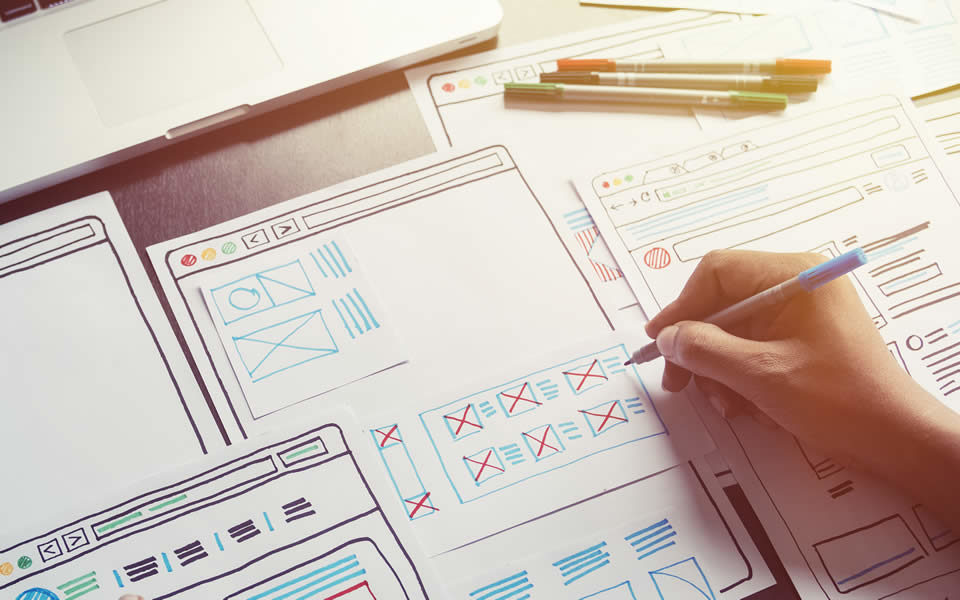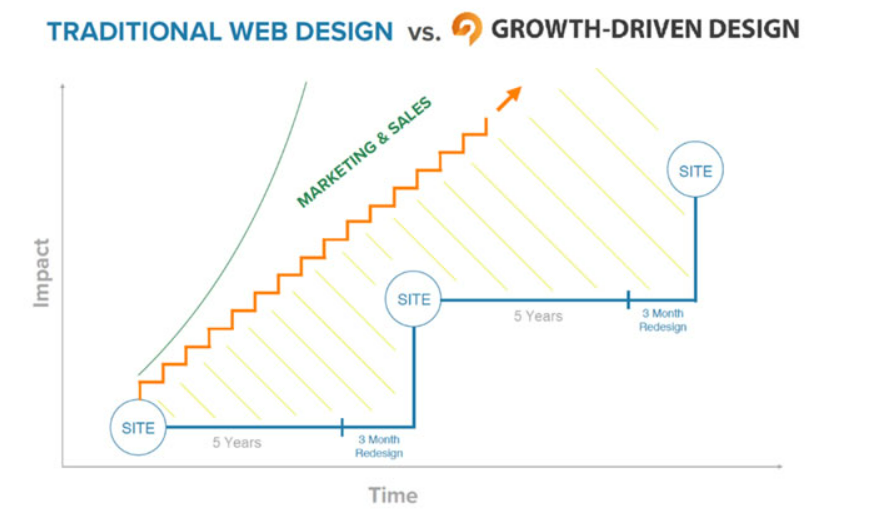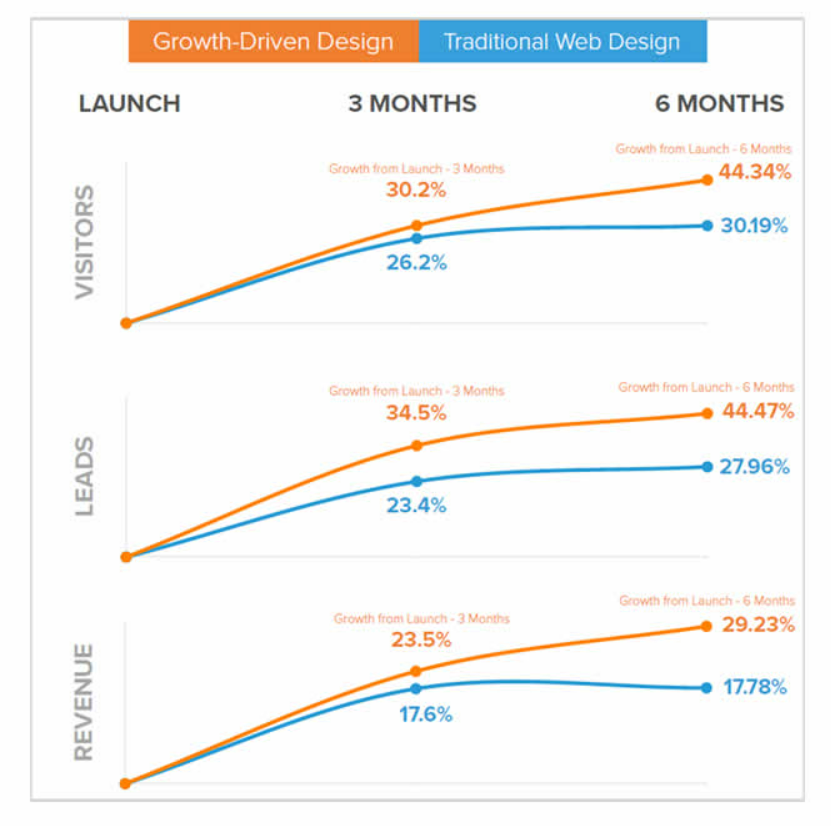
If you’ve managed a website redesign process recently, you might have come away with the impression that traditional website design is broken. It’s definitely a reasonable feeling if you experienced any (or all) of the following:
In fact, if you’ve experienced multiple website redesigns in your career, you may have given up the concept of launching a site “on-time and on-budget” altogether.
In addition, you’ve likely fallen into a routine of working 3-6 months to launch a site, only to see the once shiny new state-of-the-art website sit stagnant 3-5 years without any major functional improvements. At the end of the cycle, you kick-start the redesign process all over again and follow the same pattern.

Doesn’t the time between site redesigns feel like a potential missed opportunity to learn from your users’ browsing habits and serve them the best possible experience?
Fortunately, it doesn’t have to be this way. Growth-Driven Design was created specifically to address these pitfalls of the traditional website design process. Growth-Driven Design is built around three core phases:
The key to Growth-Driven Design is learning based on real data from your users (rather than solely basing design decisions on assumptions about your audience) and allowing those learnings to drive improvements to your website. With this approach, the faster that a Launch Pad site goes live, the better. As mentioned above, it won’t be a final product; however, it will be better than the site you have today, and it can offer invaluable insights into user behavior after launch.
Those insights can then be leveraged to determine which of your initial “wish list” features make the most sense to incorporate into the site in the next continuous improvement cycle (often on a quarterly basis).
What type of results can you expect with Growth-Driven Design? Rather than seeing an initial bump and then a slow leveling off of traffic and leads that can be common with traditional web design, Growth-Driven Design aims to offer continual improvement over time. Take a look at the chart below to see those trends already starting to show just six months after launch.

Source: HubSpot
A new website is typically one of your largest marketing expenses, and has the potential to be your greatest marketing asset when combined with a sound strategy. By taking a continuous improvement approach to the web design process, you can ensure that this asset is keeping pace with your customers’ changing needs in the coming months and years.
Interested in learning more about the Growth-Driven Design process? Marcum Strategic Marketing is Growth-Driven Design Agency Certified, and we can help you determine how this approach might improve your next website design project. To start the conversation, contact Bob Goricki at 440-772-0182 or fill out our contact form here.
These Stories on Website Design & Development
Have lingering questions after checking us out? We’re here to help! And don’t worry—we won’t go into sales-stalking mode. So please feel comfortable filling out the form below and take us up on our offer to help.
About Us
Our Work
Contact
Strategic 7 Marketing
6685 Beta Drive
Cleveland, OH 44143
440.772.0186